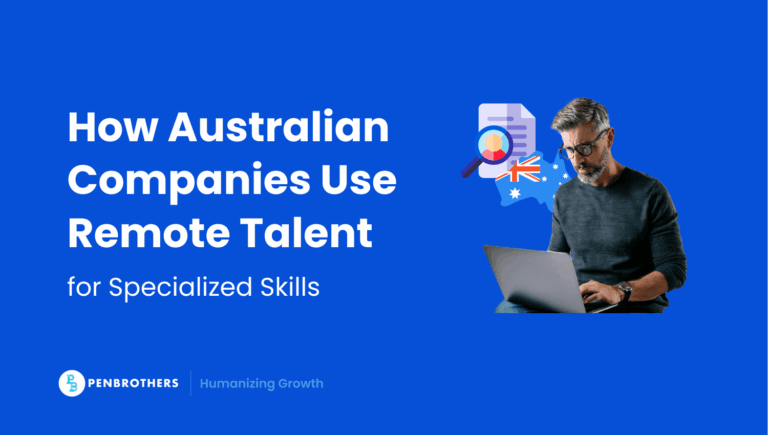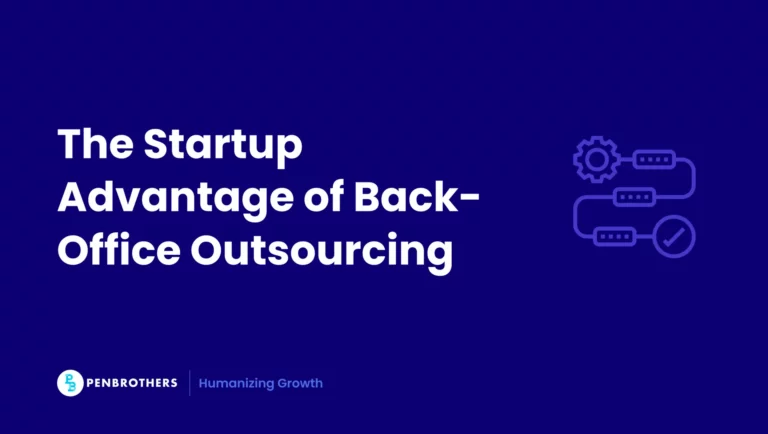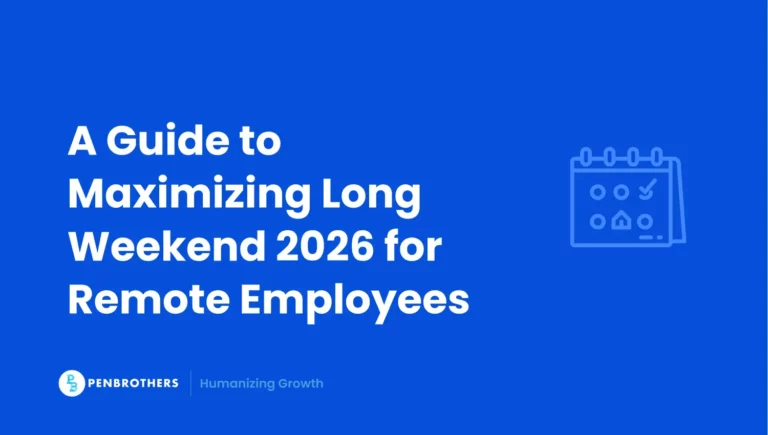Graphic design isn’t just about aesthetics. It’s business-critical. It shapes perception, signals credibility, and helps brands cut through the noise.
Content with relevant visuals gets 94% more views than content without. That’s not a statistic to ignore. Especially when your brand’s first impression often comes from a logo, website layout, or social media post. So, how much should you really be paying a graphic designer in 2025?
This article breaks down what goes into pricing, what models work best, and how global companies are hiring top designers at competitive rates. If you’re new to offshore hiring, check out our offshoring strategy guide to learn how global businesses successfully scale their design needs.
Key Takeaways
- A Strategic Asset, Not Just a Visual Tweak: Graphic design is a business-critical function that directly impacts brand perception, user experience, and marketing effectiveness. Content with relevant visuals, for example, gets 94% more views.
- Pricing is Determined by Eight Key Factors: The cost of graphic design is not arbitrary. It is determined by a combination of the designer’s experience level, the project’s scope and complexity, the urgency of the turnaround time, the number of revisions, licensing and ownership rights, the designer’s location, the software required, and the specific service type (e.g., a logo vs. a website).
- Offshoring Offers Massive Cost Savings Without Sacrificing Quality: A designer’s location is one of the biggest factors in cost. A U.S.-based graphic designer has a median salary of $73,892, while a highly skilled senior-level designer in the Philippines earns an average of $13,150. This allows companies to access top-tier, English-proficient talent at a fraction of the cost.
- Logo Pricing Reflects Strategy, Not Just Drawing Time: The high price of a professional logo (which can range from $1,500 to $10,000+) is not for the final image itself. It reflects the entire strategic process, which includes discovery and research, concept development, multiple revisions, and the legal transfer of intellectual property (IP) rights.
What Affects Graphic Designer Costs?
Experience & Skill Level
Junior designers typically charge less because they’re building their portfolio. They’re capable of executing straightforward tasks like simple social media layouts, flyers, or minor edits. Mid-level designers, on the other hand, bring more polished technical skills and often have agency or client experience—making them ideal for tasks that require a bit of strategic thinking. Senior or seasoned graphic designers command higher rates for good reason: they think beyond aesthetics. They provide brand-aligned creative direction, manage complex design systems, and often have UX/UI knowledge that supports broader business goals. If your project is brand-defining, customer-facing, or conversion-driven, this is the level you need.
Project Scope & Complexity
The broader the scope, the bigger the budget. Designing a static ad and building an end-to-end website interface are worlds apart in time, strategy, and required collaboration. Small tasks might take a few hours, but larger projects—like product packaging for multiple SKUs or an entire pitch deck redesign—require careful planning, consistency across formats, and possibly multiple design iterations. Complexity also includes how many deliverables are needed, the need for interactivity (e.g. animations or prototypes), and whether multiple stakeholders are involved in the feedback loop.
Urgency & Turnaround Time
Tight deadlines usually come with a price tag. When you need something “yesterday,” designers often rearrange their schedule or work after hours to deliver. This often incurs a rush fee of 25–50% more than the base rate. Urgent work also leaves less time for creative exploration or refinement, so it’s not just more expensive—it can also lead to more trade-offs. If you can, build in a realistic timeline. You’ll get better work and better rates.
Revisions
Most professional graphic designers offer 1 to 3 rounds of revisions as part of their standard package. That usually covers tweaks to layout, copy, or color adjustments based on initial feedback. But when revision requests go beyond the original scope—like changing the entire direction, adding new formats, or reworking already-approved content—designers will often charge an hourly fee or a flat rate per additional revision. Clear briefs and consolidated feedback can help minimize these extra costs and streamline collaboration.
Licensing & Ownership
Design work is intellectual property. Just because you’ve paid for it doesn’t mean you own it outright—unless that’s explicitly stated in your agreement. Some designers retain rights to reuse or showcase the work in their portfolio unless full ownership is bought out. If you want exclusive usage rights (especially for commercial products or widespread brand use), expect to pay more. Licensing also becomes important for designs that include purchased assets, fonts, or third-party illustrations. Always clarify usage terms at the start of the project.
Location (Onshore vs. Offshore)
Where your designer is based matters—not just for time zone alignment, but for cost. Onshore designers in the U.S., UK, or Australia typically charge higher rates due to higher living costs and demand.
For instance, the median salary for a U.S.-based graphic designer is around $73,892/year in 2025. In contrast, equally skilled designers from the Philippines have a significantly different cost structure. According to 2025 data, an entry-level graphic designer in the Philippines earns an average of ₱426,651 (approx. $7,700 USD), while a senior-level designer earns an average of ₱729,164 (approx. $13,150 USD).
This difference doesn’t mean you’re compromising on quality. Many offshore creatives are agency-trained, English-proficient, and experienced in working with international brands. Through companies like Penbrothers, global businesses gain access to top-tier talent without ballooning their budget.
Tools and Software Used
Not all design tools are created equal—and neither are the costs associated with them. Professional designers typically invest in premium software suites like Adobe Creative Cloud, Figma, Sketch, or even advanced 3D modeling platforms like Blender or Cinema 4D. These tools come with monthly subscriptions and require technical mastery, which is reflected in the final pricing.
For example, Adobe’s Creative Cloud all-apps plan costs upwards of $54.99/month per user, and mastering it takes years of experience. Some tools, like Figma, also offer collaborative design and prototyping features that make remote work smoother, especially across teams. If your project involves highly specialized tools—like AR/VR assets or motion design—you should expect higher fees, but also higher production value.
Type of Service
What you need designed will significantly influence how much you’ll pay. A one-off social media post is priced very differently from a complete brand identity system. Logo design, for instance, may include mood boards, concept explorations, vector formats, and brand guidelines—making it far more intensive than it first appears. Similarly, website or app design involves layout wireframes, responsive behavior, and user interface thinking that goes beyond visuals. Here’s a breakdown of how services often tier out in terms of complexity:
- Basic design: Posters, banners, email headers
- Mid-level: Logos, brochures, social media kits
- Advanced: Website UI, mobile app mockups, full brand kits, packaging systems
Clearly defining the service type from the beginning helps avoid scope creep and enables your designer to provide a more accurate quote. It also ensures that you get the level of detail, polish, and format flexibility you actually need.
Popular Models for Graphic Design Costs
Hourly Rates
This model is best for quick, one-off tasks or ongoing, undefined work. You only pay for the hours logged, making it flexible—but costs can add up if a project takes longer than expected. It’s ideal when scope is unclear or evolving, but less suitable for budget-conscious projects.
Fixed Project Fees
Perfect for well-scoped projects with clear deliverables and deadlines. You agree on the price upfront, which keeps your budget predictable. However, any major changes outside the original scope may require additional fees or renegotiation.
Monthly Retainers
A retainer gives you guaranteed access to a designer each month for a fixed number of hours. This is great if you have recurring design needs but not enough volume to justify a full-time hire. It also helps build creative consistency over time.
Design Subscriptions
An increasingly popular model where you pay a flat monthly rate for a set number of design requests or hours. It’s efficient for businesses with high-volume design needs like content teams, e-commerce brands, or social media agencies. Turnaround time and scope limits often vary by provider.
How Much Should You Expect to Pay in 2025?
Here’s a quick comparison between the cost of hiring a US-based and a Philippine-based graphic designer:
Graphic Designer
Creates visual concepts and designs to communicate ideas that inspire, inform, or captivate audiences. Skilled in branding, layout, and digital content across print and online platforms. Proficient in tools like Adobe Creative Suite and Figma.
| Philippine Annual Salary: | USD $7,700 – $13,150+ |
| United States Annual Salary: | USD $73,892 (Median) |
That’s not a typo. The Philippines is a creative outsourcing hub. English-proficient, tech-savvy, and skilled in Western design aesthetics.
The World Economic Forum’s Future of Jobs Report 2025 confirms this, identifying “analytical thinking” and “creative thinking” as the two most essential core skills for workers in 2025. It also highlights the rapid growth in demand for skills in AI, big data, and technological literacy—all areas where modern designers are increasingly expected to be competent. These skills are integral to roles in creative and digital marketing, indicating a sustained demand for professionals in these areas.
With Penbrothers, clients reduce overhead by up to 70% by offshoring roles like graphic design. Our talent pool is pre-vetted, highly experienced, and ready to scale.
Curious about salary benchmarks across other roles too? Explore our salary guide for offshore hiring to get real-world data on cost savings and talent value.
When Should You Hire a Graphic Designer?
Launching or rebranding
When you’re entering the market—or reinventing how your business looks and feels—a graphic designer becomes essential. They can craft a cohesive visual identity, from your logo and color palette to typography and brand assets. This ensures that your new brand communicates your message clearly and resonates with your target audience right from day one.
Creating marketing campaigns
Campaigns live or die by how they’re presented. Whether it’s an email blast, a print ad, or a digital promo, a graphic designer ensures your message is visually compelling and brand-consistent. Great design not only grabs attention but also guides the viewer toward the intended action, boosting campaign performance across channels.
Designing websites or mobile apps
Your website or app is often the first real interaction people have with your business. A graphic designer plays a key role in shaping user experience through layout, navigation, and visual hierarchy. From landing page mockups to custom icons, they bring usability and aesthetics together to create intuitive, engaging digital products.
Producing social media visuals
In a fast-scrolling world, eye-catching content wins. Graphic designers help you stand out on feeds with well-crafted posts, stories, carousels, and ad creatives. They maintain visual consistency across platforms while tailoring content formats to each channel’s best practices, ultimately strengthening brand recall and engagement.
Developing packaging or labels
If you’re selling a physical product, design doesn’t stop at the brand—it extends to the shelf. A designer can develop packaging that balances form and function: protecting the product, meeting regulatory requirements, and appealing to customers at first glance. Strategic packaging design can influence buying decisions and support brand storytelling.
Preparing sales decks or investor presentations
High-stakes presentations need more than bullet points. A graphic designer transforms dense data into clean, visually engaging slides that are easier to digest. From charts and infographics to branded layouts, they help you present confidently to clients, partners, or investors with visuals that support and elevate your narrative.
Design isn’t a nice-to-have anymore. It’s a growth lever. According to the report, leading organizations are more likely to understand and see the design team as a strategic business partner, working with senior management to implement organizational strategies with respect and investment in mutual growth.
Choosing the Right Graphic Designer Model for Your Business
Whether you’re scaling a startup or revamping an established brand, selecting the right type of graphic design talent is crucial. Each hiring model—be it in-house, freelance, onshore, or offshore—comes with its own benefits and trade-offs. The table below offers a quick comparison to help you evaluate which option best fits your budget, timeline, and creative needs.
| Hiring Model | Pros | Cons |
| In-House Designers | Fully dedicated; Deep brand familiarity; Easy collaboration | High cost (salary + benefits); Slower hiring process |
| Freelancers | High flexibility; Wide variety of creative styles; Scalable | Reliability varies; Requires more hands-on management |
| Onshore Designers | Local timezone & communication; Culturally aligned designs | Expensive rates; Limited scalability for startups |
| Remote Offshore Designers (via Penbrothers) | Cost-efficient; Pre-vetted talent; Scales easily; Long-term fit | Needs onboarding (handled by Penbrothers); Timezone coordination (manageable with good systems) |
Hiring through Penbrothers ensures smooth collaboration, from sourcing to onboarding. Our clients access top-tier Filipino creatives without the admin hassle.
How Much Does a Logo Really Cost in 2025?
The article’s primary keyword, “graphic design cost,” is frequently linked to one specific deliverable: the logo. The price for a logo is notoriously variable because you are not buying a simple image; you are investing in a strategic asset.
Your “People Also Ask” questions reveal this is a primary concern for users. Here is a breakdown of logo pricing in 2025, from cheapest to most expensive, to directly answer those queries.
What is a fair price for a logo design?
A “fair” price depends entirely on the method and the required business outcomes. According to 2025 market rates, the options generally fall into these brackets:
- DIY Logo Makers (e.g., Canva, Looka): $10 – $100. This is a tool, not a service. You get a template-based design and are responsible for all strategy, customization, and file management.
- Beginner Freelancer or Contest Site: $100 – $500. At this level, you can get a custom-drawn graphic. However, it may lack deep strategic research or a comprehensive set of brand assets. This directly answers: “Is $100 a good price for a logo?” It is a good price for a basic custom graphic, but not for a complete brand identity.
- Experienced Freelancer or Boutique Studio: $1,500 – $10,000. This is the most common range for a professional, strategic logo package. This price reflects a process that includes market research, concept development, multiple revisions, and a full suite of files.
- Branding Agency: $10,000 – $50,000+. This involves a comprehensive brand strategy that may include naming, messaging, positioning, and a full visual identity system far beyond just the logo.
Why is logo design so expensive?
The cost is not for the 10 minutes it takes to draw the final mark. The cost covers the entire strategic process, which includes:
- Discovery & Research: Understanding your business, target audience, and competitors.
- Concept & Iteration: Developing and sketching multiple unique directions.
- Revisions & Feedback: A structured process for refining the chosen concept.
- Expertise: Paying for a designer’s years of experience in typography, color theory, and brand strategy.
- Intellectual Property: The cost includes the transfer of rights, giving your business exclusive ownership to use (and often trademark) the design.
What does a professional logo package include?
A logo is useless as a single .jpg file. A professional package is a toolkit that ensures your brand looks consistent everywhere. It should always include:
- Vector Files (e.g., .SVG, .EPS, .AI): The master files. Infinitely scalable for everything from a pen to a billboard.
- Raster Files (e.g., .PNG, .JPG): High-resolution files for web, social media, and digital use, including transparent backgrounds.
- Color Variations: Full color, all-black (one-color), and all-white (knockout) versions to work on any background.
- Basic Style Guide (Optional but Recommended): A simple document showing the exact color codes (HEX, CMYK) and fonts used, ensuring consistency for your entire team.
Penbrother’s Success Story
How DesignCrowd Scaled to 134 Creative Hires with 78% Cost Savings
DesignCrowd, a leading Australian crowdsourcing platform for design services, set out to build a high-performing team in the Philippines to scale efficiently while reducing overhead. After seeing the value of the local talent firsthand, they turned to Penbrothers to help expand their operations through offshore staffing.
Penbrothers provided full operational support—including recruitment, HR management, payroll, and legal compliance—allowing DesignCrowd to focus on growing their business. Through this partnership, DesignCrowd successfully hired 134 creative professionals in specialized roles such as:
- Logo Curation Specialists
- In-House Logo and Graphic Designers
- Social Media and Graphic Design Curation Specialists
- Graphic Designers and Video Editors
- Icon and Graphic Designers
With this team, DesignCrowd achieved an impressive 78% cost reduction compared to their in-house setup in Australia. Beyond savings, they gained reliable, creative talent who aligned with their brand and scaled with their business. The consultative hiring process ensured a strong cultural and professional fit across all roles, boosting long-term performance and retention.
Design with Intent, Hire with Strategy
There’s no one-size-fits-all answer to pricing a graphic designer. But understanding the variables and aligning them with your business model puts you ahead. The right designer won’t just deliver a logo—they’ll strengthen your brand.
Global hiring makes world-class design accessible. And with Penbrothers, you get the added layer of vetting, support, and scalability.
Looking for more proof of how offshoring creative roles can drive growth? Check out our feature on Philippines as a global creative hub, and explore the benefits of remote workers for employers.
Ready to build your offshore creative team? Let’s design smarter—together.
Frequently Asked Questions
The cost is primarily determined by eight factors: the designer’s experience level, the project’s scope and complexity, the urgency of the deadline, the number of revisions included, the licensing and ownership rights to the final work, the designer’s location (onshore vs. offshore), the software required, and the specific type of service (e.g., a logo vs. a social media post).
The cost difference is significant. In the U.S., the median annual salary for a graphic designer in 2025 is around $73,892. In the Philippines, a skilled, senior-level graphic designer earns an average of $13,150 annually, providing a cost saving of over 70% for comparable talent.
A fair price depends on the provider. While a DIY logo maker costs under $100, a professional, strategic logo package from an experienced freelancer or boutique studio typically costs between $1,500 and $10,000. This price includes research, concept development, revisions, and all the necessary file formats.
The cost is for the entire strategic process and intellectual property, not just the time it takes to draw the final image. A professional process includes discovery and research, concept development and iteration, and multiple rounds of revisions. Most importantly, the price includes the legal transfer of IP rights, giving your business exclusive ownership of the asset.
A freelancer offers flexibility for short-term projects, but their availability and reliability can vary. An offshore staffing agency (like Penbrothers) provides pre-vetted, dedicated, long-term professionals and manages all HR, payroll, and compliance, offering greater stability, reliability, and a structured onboarding process.






